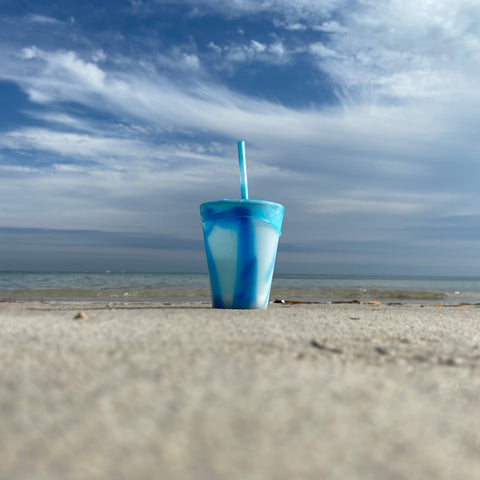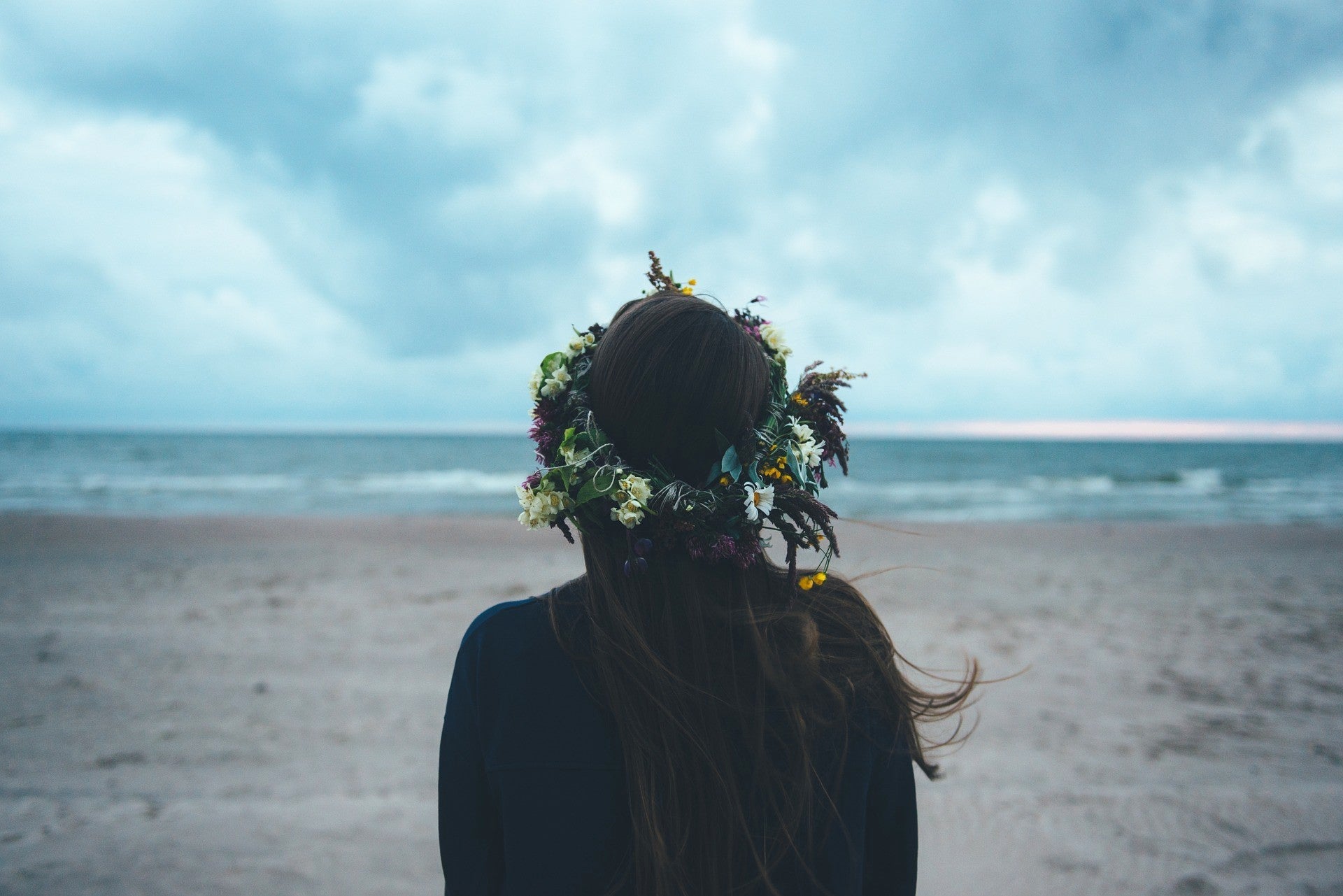Planet Earth is called the blue planet for a good reason— its surface is 71% water. And our oceans store 96.5% of this water. But our oceans do way more than just storing water. They’re the source of life on our planet and produce more than 50% of the oxygen we breathe.
At GoSili, protecting the ocean is one of our core values and top priorities. To spread the love for our seas, we’re sharing some fascinating facts about the ocean. Plus, things you can do today to care for and protect the seas. Keep scrolling to learn more!
The Pacific Ocean

The Pacific Ocean is the biggest and deepest ocean in the world. It’s thriving with biodiversity, like The Great Barrier Reef, a World’s Heritage Site and the biggest coral reef in the world. The Pacific Ocean Basin, where 75% of the world’s volcanoes are, is also in the Pacific Ocean.
What’s Going On in The Pacific Ocean?
The Pacific Ocean is home to the Great Pacific Garbage Patch, where 1.8 trillion pieces of garbage are floating. Its size is 2x bigger than the size of Texas and the seafloor beneath it may also be an underwater trash heap.
Also, the depths of California’s Monterey Bay have more microplastics than the surface of the Great Pacific Garbage Patch. These microplastics are a huge threat to marine life and recovering them from the ocean is almost impossible. This is why reducing waste is key to protecting the ocean.
The Atlantic Ocean

The Atlantic is the second largest ocean in the world, covering 25% of the Earth’s surface. It’s also home to the largest mountain range in the world— and it’s all underwater. These underwater mountains are called Mid-Ocean Ridge and they expand for over 40,000 miles. ¹
What’s Up In The Atlantic Ocean?
Since the 60’s, plastic pollution in the North Atlantic has tripled, reaching over 220 million tons. Most of this plastic comes from packaging and it’s harming all marine life, from small fish to seabirds.
The Atlantic Ocean also has its own garbage patch— a lesser-known but equally damaging version of the Pacific Garbage Patch. This enormous floating garbage heap is thousands of kilometers long and hosts over 200,000 pieces of debris per square km.
The Indian Ocean

The warmest ocean of them all, the Indian Ocean, is also the youngest— only 80 million years old. Because of its high temperatures, it has less oxygen and biodiversity than all the other oceans. A recent discovery showed a sunken continent in the Indian Ocean. This ancient continent is located between Madagascar and India. ³
What’s Happening in The Indian Ocean?
The Indian Ocean is home to the remote Cocos Keeling Islands, where only 600 inhabitants live. As small and secluded as these Islands are, they’re polluted with over 238 tons of plastic debris. Most of the pollution in the Islands comes from single-use plastics, like straws and bottles. ⁴
Plus, 40% of petroleum spills happen in the Indian Ocean, causing immeasurable harm to all marine life. Even if oil spills are happening less and less each year, there were still over 10 oil spills in 2020 alone.
The Arctic Ocean
The Arctic Ocean is as unique as it gets. It’s the smallest one, covering less than 3% of the Earth’s surface. It’s mostly covered in ice and is home to incredible wildlife like polar bears, walrus, and narwhals. Even though it is the smallest ocean, the Arctic Ocean is the least explored! ⁵
What’s Going Down in The Arctic Ocean?

With more than 17 different types of plastic found in the Arctic sea ice, the Arctic Ocean has more plastic pollution than most places on Earth. The sea ice in some parts of the Arctic Ocean has more microplastics than the coasts of urban areas.
The arctic ocean is also facing the consequences of climate change. It’s currently warming up twice as fast as the rest of the world. This is causing a loss of sea ice habitat and threatening the life of polar bears and many other species.
3 Ways You Can Be An Ocean Activist
From plastic pollution to coral bleaching, there is a lot happening in our seas. But hope is not lost. We’re still on time to protect and save our oceans. If you want to be part of the solution and do your part in preserving the ocean, these are a few ways you can help.
1. Support Ocean Organizations
Many non-profit organizations are fighting to protect our oceans. They’re pushing for reforms to control plastic pollution and overfishing. Plus, some of them clean up plastic debris from different parts of the ocean.
Support them by reading and sharing their articles and by voting for representatives who endorse these reforms. An organization we love and support is Lonely Whale. Show them some love here.
2. Clean Up Your Local Waterways
Feeling inspired to be an ocean activist? Helping is easy! Visit your local lake, stream, or any waterway near you and pick up some garbage. All this trash eventually reaches the ocean. By cleaning up local lakes and rivers, you’re diverting plastic pollution from entering the ocean.
Want to create an even bigger impact? Contact an ocean clean-up organization, like Heal The Bay or Ocean Blue Project, and create your own event. Invite friends, family, and neighbors to participate!
3. Waste Less— GoSili!

Lots of the debris polluting our oceans comes from single-use plastics like straws and bottles. At GoSili, we’re on a mission to change that. With our reusable Ocean Cups, we’re prompting you to waste less, reuse more, and be an agent of change with the power of your buying choices.
One of the best ways to be an ocean activist is to understand the power of your choices. When you support mission-driven brands, like GoSili, you’re helping protect the ocean. It’s that simple. Use your money to be an advocate for our planet! Ready to contribute?
Saving The Ocean One Cup At The Time

Meet our ocean-saving Silicone Cups. With every purchase, we’re donating 1% to ocean conservation and clean-up. That means you’re helping preserve our oceans simply by shopping with us.
There’s a unique cup for each ocean and the color of each resembles the ocean they represent. No cup is the same, as the water design of the cups mimics the ocean, creating a one-of-a-kind cup every time. Plus, the patented ring keeps your cup from collapsing when gripped.
Be an advocate for our oceans. Shop for our Silicone Ocean Cups here.
Did you know there are more historic objects underwater than in all museums in the world combined? Share any fun facts you know about the ocean in the comments below!
Sources
- https://oceanexplorer.noaa.gov/facts/mid-ocean-ridge.html
- https://www.atlasobscura.com/places/north-atlantic-garbage-patch
- https://www.britannica.com/story/a-tale-of-two-submerged-continents
- https://www.imas.utas.edu.au/news/news-items/australian-islands-home-to-414-million-pieces-of-plastic-pollution
- https://www.nationalgeographic.com/environment/article/arctic-ocean





